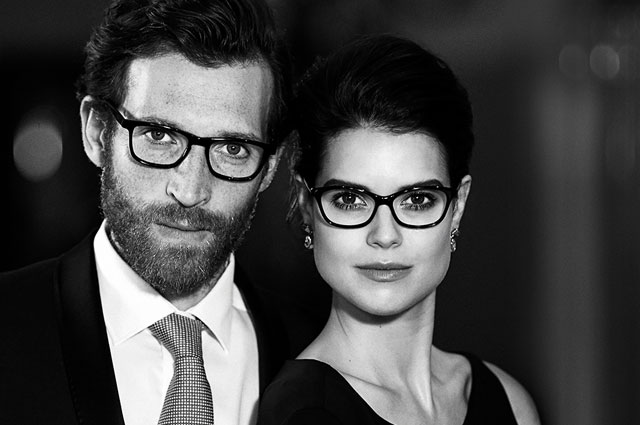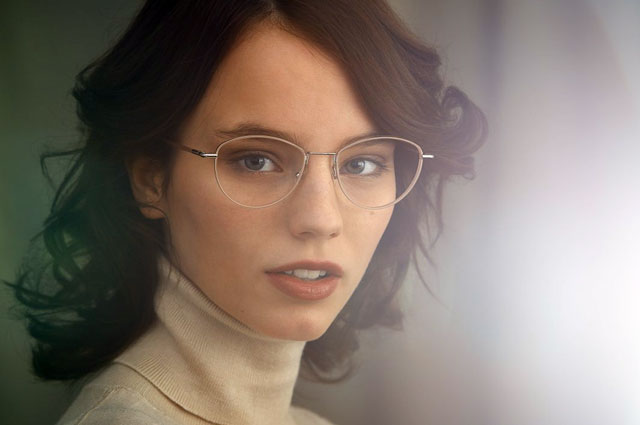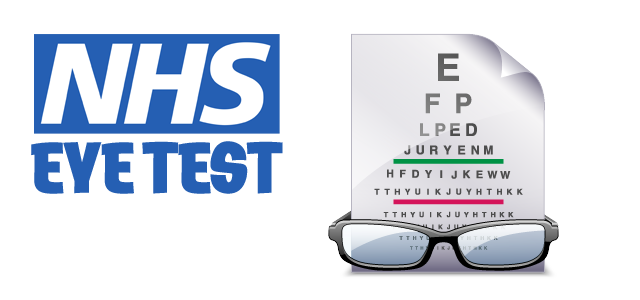![]()
Jack Brown Eyecare, Edinburgh Opticians.
Email: info@jbeyecare.com
Jack Brown Eyecare Branches
30 Elder Street, Edinburgh EH1 3DX
Tel: 0131 557 3531
Open in Google Maps
Westside Plaza, Edinburgh EH14 2SW
Tel: 0131 442 2333
Open in Google Maps

Your eyes are remarkable devices that allow you to understand the enviroment around you, but they are also fragile and at risk of infection, damage or any other ocular disorder. This section contains information about the most common eye disorders, diseases and complaints as well as providing details about how to treat the problem if possible. This section is only meant to be a guide so it is important that if you do have a serious eye disorder or complaint you consult your GP for further advice.
Acanthamoeba Keratitis
Contact lens wearers who experience any kind of unusual pain in their eyes should visit their optometrist or contact lens practitioner straight away.
More info...
Adie's Pupil
It is generally associated with loss of some reflexes, such as the knee-jerk. It occurs mainly in middle age, and more commonly in women than in men.
More Info...
Age-Related Macular Degeneration
Imagine that your eye is like a camera. There is a lens and an aperture (an opening) at the front, which both adjust to bring objects into focus on the retina at the back of your eye.
More Info...
Amblyopia
In essence, amblyopia is a disorder of the brain cells that control the vision in one eye, not a problem with the eye itself. The brain cells diminish in size when they are not used.
More Info...
Angioid Streaks and PXE
Angioid streaks are broad, irregular, red to brown to grey lines which radiate from the area around the optic nerve head under the retinas of individuals with pseudoxanthoma elasticum (PXE).
More Info...
Anophthalmia and Microphthalmia
The fight for answers goes on - questions are still being asked, 'what caused my child's visual impairment?'
More Info...
Astigmatism
The cornea is reshaped to allow light to focus properly on the retina. With refractive surgery, the eye regains its proper focusing ability and astigmatism is corrected.
More Info...
Azoor
The condition usually presents with flashing lights and an enlarged blind spot. The area of visual loss may spread for a period and then become stable.
More Info...
Blepharitis
Blepharitis has multiple causes but is usually caused by seborrheic dermatitis, a bacterial infection, or a combination of both, allergies, or infestation with lice (in the eyelashes).
More Info...
Cataracts
The most effective treatment for cataracts is a small operation to remove the cloudy lens. This cannot be performed by laser, although laser treatment is sometimes needed afterwards.
More Info...
Coloboma
Although no specific pattern has been identified there appears to be a strong hereditary factor in the incidence of this condition, which is sometimes linked to chromosomal disorders.
More Info...
Colour Vision Deficiency
The nerve cells which receive and process light at the back of the eye - the retina - are of two main types: the rod-like cells, which operate at night and the cone-like, which allow us to see fine detail and colours by day.
More Info...
Conjunctivitis
Conjunctivitis is an inflammation of the conjunctiva, the thin, transparent layer that lines the inner eyelid and covers the white part of the eye.
More Info...
Corneal Dystrophy
The globe of the eye is made of five layers and the cornea is the transparent front portion. It is also the most sensitive structure in the body because of the density of nerves.
More Info...
Diabetes and Your Vision
Diabetes mellitus or `sugar diabetes' affects about one person in fifty in the UK. This means that the body cannot cope normally with sugar and other carbohydrates in the diet.
More Info...
Diabetic Retinopathy
This condition is very common in people who have had diabetes for a long time. Your doctor may be able to see abnormalities in your eyes, but there is no threat to your sight.
More Info...
Double Vision
Double vision can be extremely discomforting. The brain acts to alleviate the discomfort by suppressing, or blanking out, one of the images.
More Info...
Drusen
Small, sharply defined, circular, yellow or white dots lying below the level of the retinal vessels, either discreet or coalesced into larger masses, located throughout the fundus but tending to collect in the region of the macula, around the optic disk, or in the periphery.
More Info...
Dry Eye
When we blink, tears form a film which spreads over the eye, making the surface smooth and optically clear and enabling good vision.
More Info...
Dyslexia & Vision
Dyslexia is a neurological disorder that affects reading and language processing. It is not caused by inability or lack of motivation, but rather a difference in the way the brain processes information.
More Info...
Entropion
This is a condition that commonly affects the lower eyelid, causing it to turn inwards, resulting in the eyelashes rubbing on the front of the eye.
More Info...
Episcleritis
Episcleritis presents as a relatively asymptomatic acute onset redness in one or both eyes. Typically, you'll observe a sectoral injection of the episcleral and overlying conjunctival vessels, although the redness may be diffuse throughout these tissues.
More Info...
Eyelid and Tear Gland Disorders
The eyelids play a key role in protecting the eyes. They help spread moisture (tears) over the surface of the eyes when they close (for example, while blinking); thus, they help prevent the eyes from becoming dry.
More Info...
Farsightedness
If you can see objects at a distance clearly but have trouble focusing well on objects close up, you may be farsighted. Your eye care practitioner may refer to farsightedness as long-sightedness, or by its medical names, hypermetropia or hyperopia.
More Info...
Fuchs Dystrophy
Fuchs dystrophy is a slowly progressing disease that usually affects both eyes and is slightly more common in women than in men. Although doctors can often see early signs of Fuchs dystrophy in people in their 30s and 40s, the disease rarely affects vision until a person reaches their 50s and 60s.
More Info...
Glaucoma
Glaucoma is the name for a group of eye conditions in which the optic nerve is damaged at the point where it leaves the eye. This nerve carries information from the light sensitive layer in your eye, the retina, to the brain where it is perceived as a picture.
More Info...
Herpes Simplex Infection
When a corneal herpes simplex infection (herpes simplex keratoconjunctivitis, keratitis) begins, it may resemble a mild bacterial infection because the eyes are slightly painful, watery, red, and sensitive to light.
More Info...
Herpes Zoster (Shingles) Eye Infections
Herpes zoster is the medical name for shingles. It is caused by reactivation in the adult years of the chicken pox virus that occurred during childhood (the varicalla-zoster virus).
More Info...
Iritis
Iritis is the inflammation of the iris, the coloured portion of the eye. It has been known cause extreme pain, light sensitivity and sight loss, which is often the result of a disease in another part of the body.
More Info...
Keratitis
Infection or inflammation of the cornea (the centre portion of the eye that surrounds the pupil).
More Info...
Keratoconus
Keratoconus is a vision disorder that occurs when the normally round cornea (the front part of the eye) becomes thin and irregular (cone) shaped. This abnormal shape prevents the light entering the eye from being focused correctly on the retina and causes distortion of vision.
More Info...
Lattice Degeneration
The patient is usually over age 20 and is nearly always asymptomatic, except for possible complaints of flashing lights (photopsia). There appears to be a higher incidence of myopia in patients with lattice degeneration. There is no racial or sexual predilection.
More Info...
Macular Hole
The human eye is shaped like a ball, measuring approximately one inch across, and functions like a living camera. The front portion of the eye, consisting of the cornea (the clear cover of the eye), the lens and the iris (the coloured portion of the eye), acts to focus light on the back of the eye, much like the lens and aperture system of a camera focuses light on a piece of film.
More Info...
Myopia - Nearsightedness
Your eye care professional may refer to the condition as myopia, a term that comes from a Greek word meaning "closed eyes." Use of the word "myopia" for this condition may have grown out of one of the main indications of nearsightedness: Squinting to see distant objects clearly.
More Info...
Myopia - Short Sightedness
Myopia (short-sightedness) occurs when rays of light are brought to a focus in front of the retina because the optical power of the eye is too great, or the eye is too long. The latest research finally proves that contact lenses can slow down the progression of Myopia and, in some cases, halt it all together.
More Info...
Nystagmus
Nystagmus is an involuntary movement of the eyes - usually from side to side, but sometimes the eyes oscillate up and down or even in a circular motion. Most people with nystagmus have vision which is much worse than average - well below what is considered to be short sighted.
More Info...
Ocular Myasthenia
Much has been written about Myasthenia Gravis (MG) in recent years, because there now seems to be a plausible, scientific explanation for the cause of this disease. The word "gravis" seems no longer appropriate, as current forms of treatment have allowed patients to live fully functional and independent lives.
More Info...
Ocular Rosacea
Ocular rosacea is associated with a chronic skin condition known as acne rosacea. The problem usually affects those with light skin, and is characterized by redness and bumps concentrated on the forehead, nose and cheeks.
More Info...
Photophobia
Light sensitivity, also called photophobia, is a sensitivity or intolerance to light. Light sensitivity may occur with sunlight, fluorescent light or incandescent light. Sometimes light-sensitive people are bothered only by bright light.
More Info...
Posterior Vitreous Detachment
Posterior Vitreous Detachment or PVD for short is a common condition that occurs in about 75% of people over the age of 65. As people get older the vitreous, a jelly-like substance inside the eye changes. This can cause Posterior Vitreous Detachment.
More Info...
Presbyopia
Presbyopia is a vision condition in which the crystalline lens of your eye loses its flexibility, which makes it difficult for you to focus on close objects.
More Info...
Ptosis
Ptosis (pronounced TOE-sis) is the medical term for drooping eyelids. A person with ptosis is not able to lift one or both upper eyelids to uncover the eye completely.
More Info...
Retinal Detachment
Imagine that your eye is like a camera, and the retina is the film. The retina is a fine sheet of nerve tissue lining the inside of the eye (see diagram). Rays of light enter the eye and are focused on the retina by the lens. The retina produces a picture that is sent along the optic nerve for the brain to interpret.
More Info...
Retinitis Pigmentosa
Retinitis pigmentosa (RP) is the name given to a group of hereditary eye disorders. These disorders affect the retina, which is the light-sensitive tissue lining the back of the eye, in which the first stages of seeing take place.
More Info...
Sjögren's Syndrome
Sjögren's Syndrome (SS) pronounced 'show-grins', is one of the most common and least diagnosed rheumatic diseases. In some patients, it presents as only vague symptoms of dry mouth and irritated eyes, while in others it is associated with severe systemic illness and autoimmunity and may even terminate in lymphoid malignancy.
More Info...
Solar Retinopathy
The name given to eye damage which has been caused by looking directly at the sun is solar retinopathy. The eclipse of the sun on the 11 of August 1999 put the whole of the country at risk of eye damage due to the temptation for people to stare at the sun.
More Info...
Spots, Floaters & Flashes
Spots or floaters are small, semi transparent or cloudy particles within the vitreous, (which is the clear, jelly-like fluid that fills the inside of your eyes). They are quite common and usually, but not always, harmless.
More Info...
Squint
Squint can be a complex condition and not every situation is covered in this factsheet, but your practitioner or eye specialist will be pleased to give you further advice, if needed. Your child will benefit from your support and encouragement during treatment, so do not be afraid to ask questions that will help you to understand more easily the condition and treatment.
More Info...
Temporal Arteritis
Arteritis is a condition which can cause sudden loss of sight in one eye. Arteritis may be generalised or confined to one area .
More Info...
Thyroid Eye Diseases
This is a disorder where the fat and muscles behind and around the eyes become swollen. There is still much that we do not know about it. However it seems to occur only in people who have a certain type of thyroid problem called an auto-immune disorder.
More Info...
Uveitis
A big problem, when trying to understand Uveitis, for patients and doctors alike, is that there are many different types of Uveitis.
More Info...
vCJD & The Eye
Creutzfeld-Jakob Disease (CJD) is a frightening but nonetheless intriguing disease. It occurs in most populations at approximately 1 case per million per year.
More Info...
Vitreous and Retinal Detachment
Most of the serious retinal problems that require surgery are caused by problems with the vitreous, the clear jelly-like substance that fills the space in the eye.
More Info...
text size >

READ ON +
Oakley Eyewear
Pure performance without taking a pill - Oakley is all about high performance blended with style. In our increasingly active lifestyles, glasses are no longer about just being trendy but tailoring our look to meet our lifestyle needs. The brand that is responsible for the incredibly popular Oakley sunglasses also make...
READ ON +
Police Eyewear
The optical line from Police was created after the sunglasses came out. The Police brand name is an expression of recognisability, of uniqueness, of the celebration of self. The emotion and culture of its time is a style to be followed and inevitably trendy.
READ ON +
Prada Eyewear
Prada glasses are among the most coloured, shiny and eccentric. They often anticipate and influence future tendencies: from sophisticated designs with precious details to vintage models proposed in in different, original nuances.
READ ON +
Rayban Eyewear
Ray-Ban prescription glasses boast an extensive collection of eyewear representing the most influential and iconic designs ever produced including the Ray-Ban Aviator and Ray-Ban Wayfarer. Over the years Ray-Ban glasses have become instantly recognisable throughout the entire globe with Ray-Ban gradually expanding.
READ ON +
Silhouette Eyewear
Exceptional aesthetic often arises from the combination of two seemingly opposing poles. Silhouette eyewear has always succeeded in mastering this art: Achieving unparalleled lightness through inner strength. To remain true to oneself and to constantly set new impulses. To create timeless design that also meets the spirit of the age.
READ ON +
Tom Davies Eyewear
In 1996, British spectacle designer Tom Davies began working for a startup eyewear factory in Hong Kong, producing products for international brands, such as Tissot from the Swatch Group, Seiko and Fossil. From the very beginning of his career in eyewear, Tom identified a need to offer customers properly fitted frames that were exceptionally comfortable, elegant and made with meticulous craftsmanship.
READ ON +
Tom Ford Eyewear
om Ford prescription glasses act as a fashion statement carrying the name of one of the most influential American designers of our time. Launching in 2004, Tom Ford glasses took the fashion industry by storm as Tom Ford items took over every corner of the wardrobe from prescription glasses to the every-day essential.
READ ON +
William Morris London
Designed and coloured in London with a quirky and stylish take on eyewear, this fashion forward collection is for the young minded individual. Directional yet highly sellable, the William Morris London collection offers strong margins in bold and courageous British styles for every personality. Eyewear for every audience.











